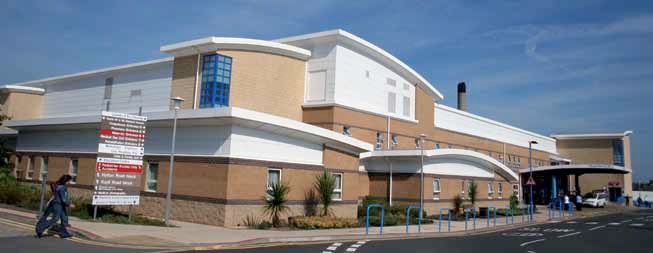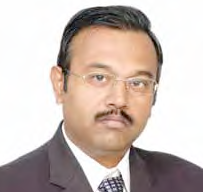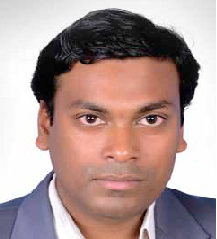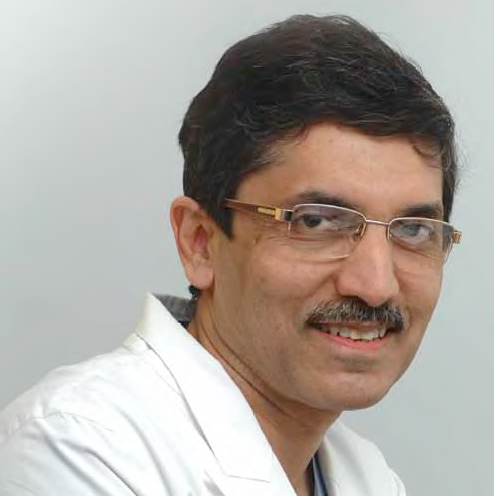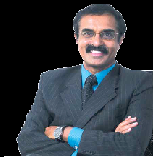
 Dr (Prof) Jagdish Prasad,
Dr (Prof) Jagdish Prasad,
Director General, Health Services,
Ministry of Health & Family Welfare,
Government of India
If you want to develop any place, make the roads and the place will get developed itself. When you say that doctors are not present in rural areas, take infrastructure there and doctors will reach there says Dr (Prof) Jagdish Prasad, Director General, Health Services, Ministry of Health & Family Welfare, Government of India. In conversation with Nayana Singh & Kartik Sharma, ENN

At the helm of Indian Healthcare, what is your opinion about the status of the health sector?
What is your vision for healthy India? Human body is disease prone; its natural to fall sick. However, at the same time it is required to ensure that people get proper treatment and affordable drugs. It is the responsibility of the Government of India (GoI) to make treatment available to all. In the context of healthy India, diseases will always avail, but once the government will start providing healthcare in every segment of the society “ be it urban, rural or slum “ then only we will be able to call our country a healthy country.
State governments havent utilised telemedicine so far, but now we are putting up a proposal and we are connecting district hospitals to medical colleges. We are going to provide necessary funds to these states so that every district should be connected to at least one medical college
In this regard what kind of strategies are you adopting?
As you know, in our Constitution, health comes under the look after of state governments. The GoI is to facilitate the infrastructure or can introduce relevant national programmes, which are 100 percent sponsored by the Central Government. But ultimately its the responsibility of the state governments to implement such schemes. Our National Rural Health Mission (NRHM) programme was introduced by the GoI seven years back with the purpose of providing rural health services. It was an appropriate step when you know that 77 percent of population stays in the rural areas. In India, 27 percent of the population lives in cities and the rest 73 percent in villages, but the ratio of doctors is reverse. In urban areas there are 73 percent of doctors, whereas in villages they are only 27 percent. To improve this situation, GoI has provided incentives to respective state governments to employ and arrange adequate number of doctors. The Central Government has funded schemes like Accredited Social Health Activist (ASHA) and Auxiliary Nurse Midwife (ANM) at the local level, to the people who can immunise the cell, who can bring pregnant ladies for health check-ups, and these people are paid for their work.

There is an acute shortage of health personnel in India. What steps is the government taking to increase the number of health personnel in India?
There is no any crisis of doctors in the country, but the problem lies with their distribution and categorisation. If you take account of all ayurvedic and homeopathic doctors, then the total number is not inadequate. The GoI has taken initiatives in the past years and has increased the number of seats of undergraduates. It has also allowed up to 250 seats per medical college if the facilities are adequate. Initially, the limit was of 150 students only. This is a great achievement. Now we are producing more than 45,000 doctors per annum. Similarly, the number of undergraduates which was only 11,000-13,000 has now increased to 2.3-2.4 lakhs. Moreover, the GoI is providing funds to hospitals with more than 300 beds for building medical colleges. Recently, the GoI upgraded 116 medical colleges, which shall increase the intake of students by 10,000.
| Government has planned to build three categories of trauma centres in every district. First, trauma centres should be built after every 100-150 kilometers with all the facilities in the districts. Second, is to build them after every 350-700 kilometer of distance on the highways which should be a state-of-the-art trauma centre. Finally we want to have trauma centre ambulance services, which means at anytime we have an ambulance ready to pick up the patient |
What is the role of technology in medical studies?
Technology has great relevance in medical studies. For instance, telemedicine needs to be used extensively in the medical colleges, however, only a few practioners are using it at the moment and the Government has not implemented it fully. Moreover, Internet penetration is lacking, which needs to be upgraded as well.
What is the status of IT adoption in medical colleges?
Today we can demonstrate and telecast surgery procedures. For example, most hospitals in Delhi have video conferences to telecast surgery procedures live to students, which is a big achievement with the rising number of students. However, the use of IT in medical education is only 10 percent, and there is scope for further expansion.
How can IT be used to address the inadequacy of doctors in rural areas?
We are coming up with a proposal where we are planning to connect district hospitals to medical colleges and we have already chosen a few districts for this. This will ensure critical patients in remote areas to have live conversation with specialists sitting in big centres and get the timely treatment. This type of arrangement is going to be financed under the telemedicine aid of the planning of the GoI. So we will help the State Government to develop this system. Even we are planning to connect Primary Health Centres and Central Health Centres through telemedicine. Now if any outbreak of the disease happens then immediately national system of disease control will get to know about this. It is 24 hours service. This is the virtue of IT. GoI has also started a programme which screens around 2 crore diabetics and the result is available online.
What is the current state of infant mortality rate in India?
It is undoubtedly decreasing but not an extent that it should be. Under the NRHM, although infant mortality and maternal mortality rates are decreasing in states such as Kerala, but there are states such as UP, Bihar, Odisha, Jharkand, Uttrakhand, Rajasthan, which are not faring well on this count. States need to take health as their topmost priority, which is not happening currently. Other than governments initiations, it is also necessary to educate and empower women, which I can assure, will bring down the mortality rate within 10 years.
In India, 27 percent of the population lives in cities and the rest 73 percent in villages, but the ratio of doctors is reverse. In urban areas there are 73 percent of doctors, whereas in villages they are only 27 percent
Which states are performing successfully in curbing infant and maternal mortality and how?
All Southern States and West Bengal are doing well because their respective governments have given due attention to these issues. A leaders vision is very important. If government takes care of healthcare and education, then most of the things will improve. If you want to develop any place, make the roads and the place will get developed itself. When you say that doctors are not present in rural areas, the main reason for that is lack of infrastructure development. A public official in our country enjoys all facilities like big house, security and a nice vehicle even in any location of the country by just clearing an exam whereas doctors who sacrifice their half of life to become a doctor cant even get a proper place to sit and check patients. Then how you are expecting a doctor to go in rural areas, first of all government should develop the infrastructure and security. These are the important things which government doesnt understand. For financial security, you have to give incentives to doctors who are going to rural areas; salaries need to be doubled. Besides, our health education needs improvement too, and should be rural-orientated since the beginning. MCI has to modify and should give training to MBBS students from third and fourth year in reputation, and doctors and teachers should also go to the villages.
How will PPP model help Improve the scenario?
We are always open to Public Private Partnership (PPP) model, but if you consider the situation in India, industrialists dont want to invest in hospitals. They all must invest 10 percent of their profit for people. If they do like this, then our country will be the best in the world.
What is the status of HIVAIDS control in our country?
It has come down tremendously. This is because of GoI initiatives. We have opened blood checking system to a great extent. Definitely the awareness and education among the people has increased.
How are you supporting organisations like NACO?
NACO is well supported by Government of India and also globally. The government doesnt have dearth of money, but what we need to do is whatever money we have, the states should utilise it properly.
Be a part of Elets Collaborative Initiatives. Join Us for Upcoming Events and explore business opportunities. Like us on Facebook , connect with us on LinkedIn and follow us on Twitter , Instagram.


